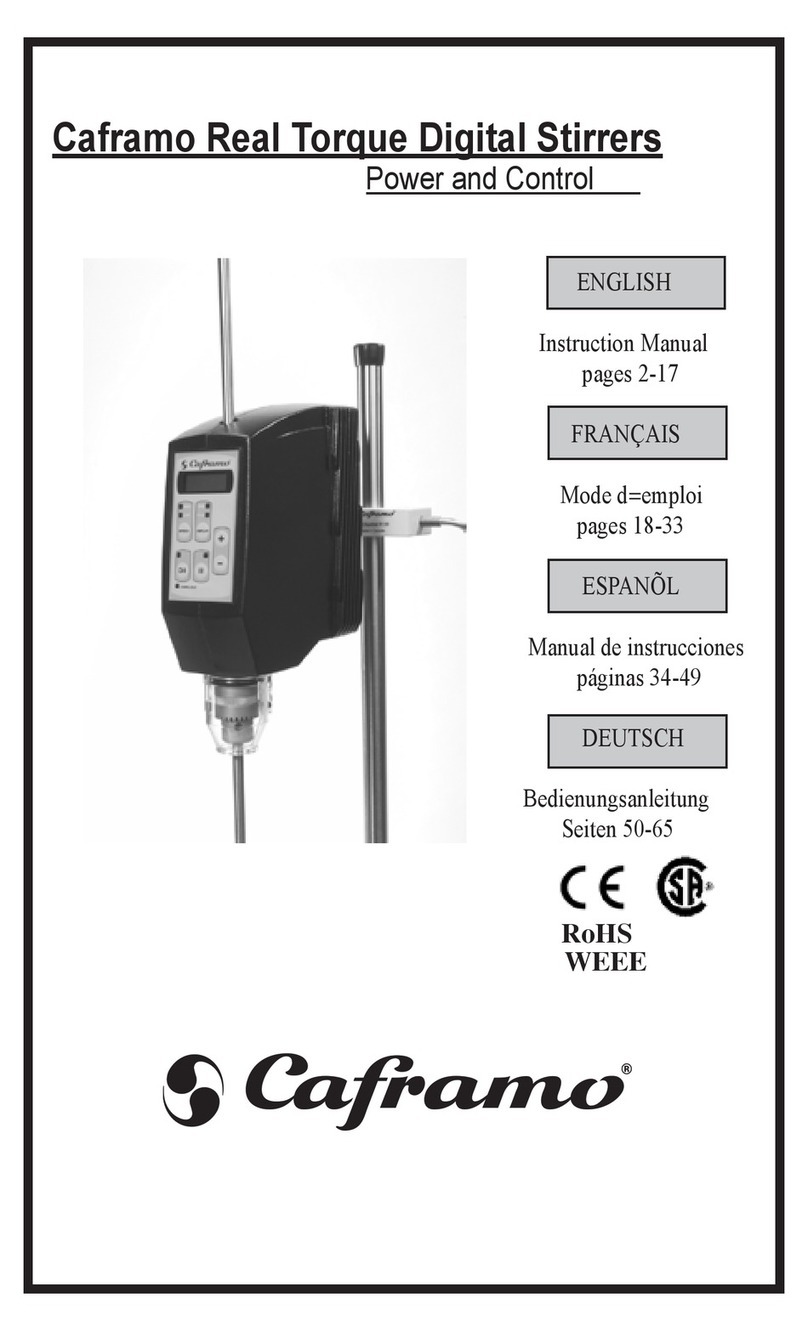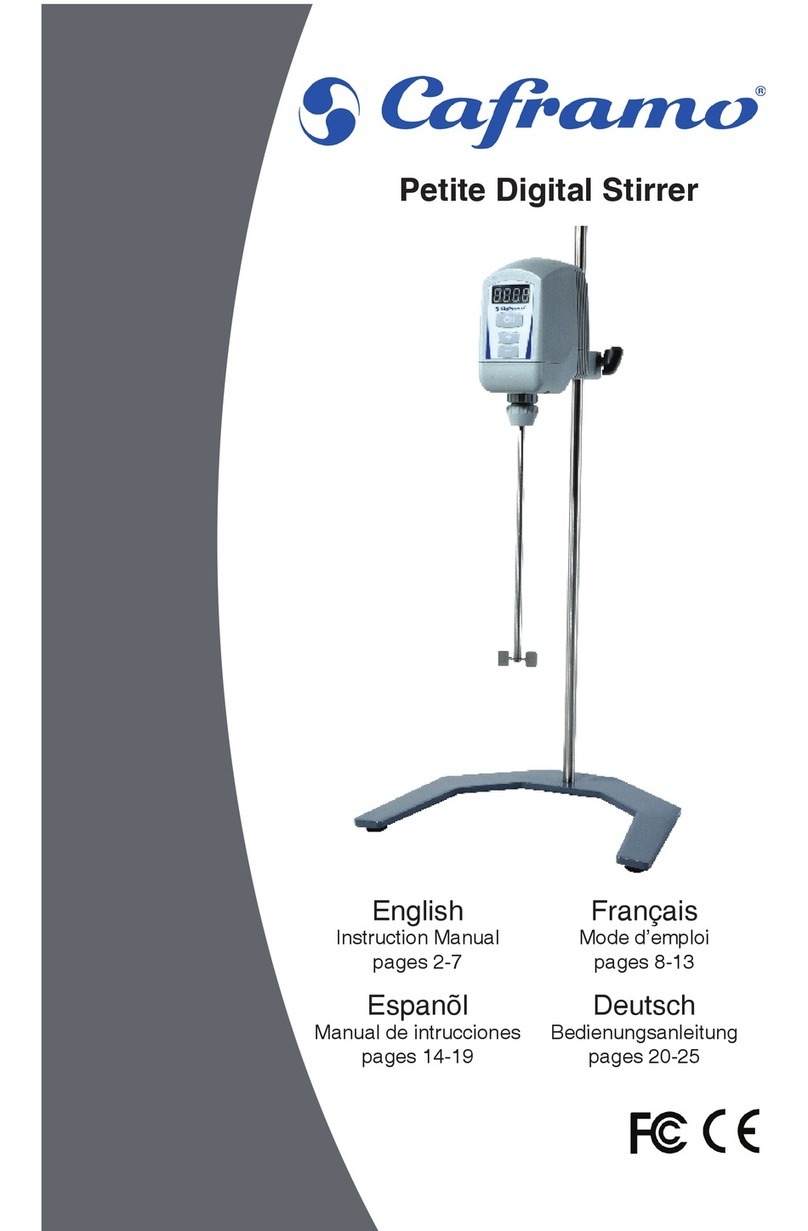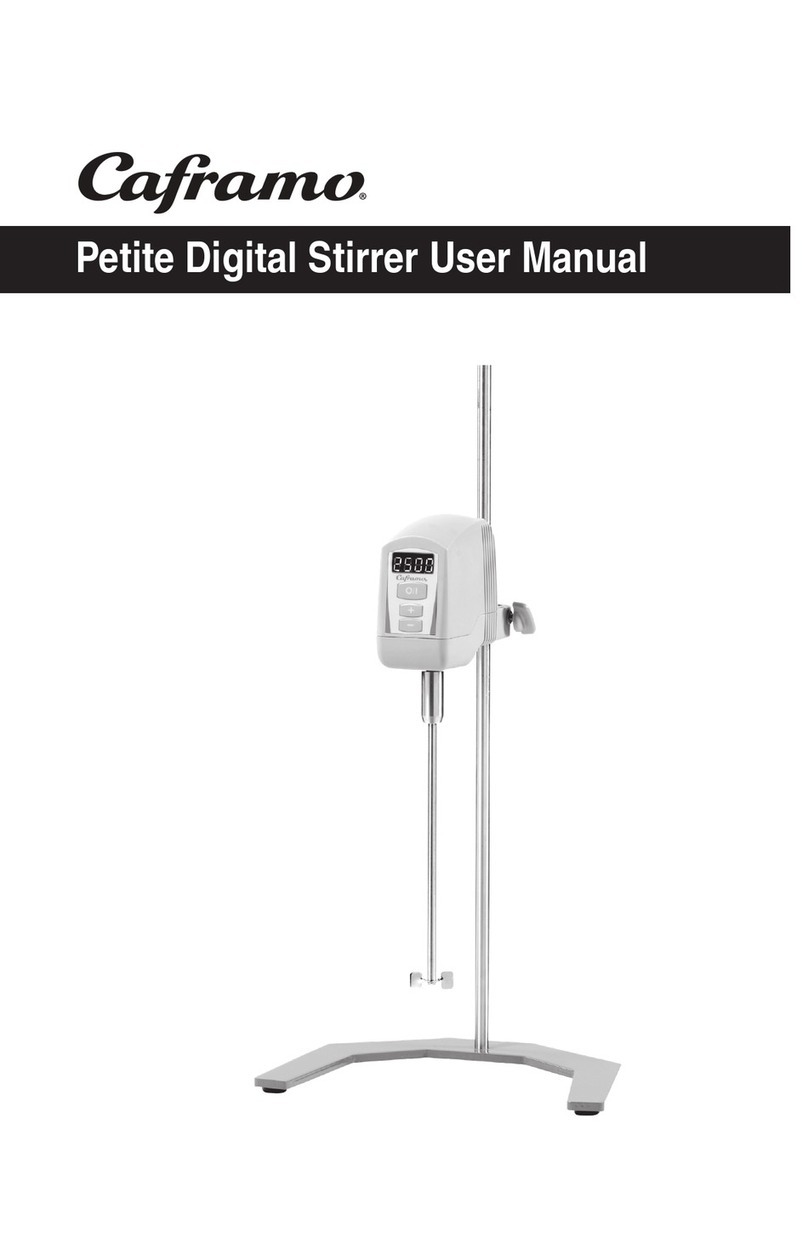
2
Safety Instructions
1. Before use, all operators must be familiar with the stirrer and should
read this entire manual, as labeled on the back of the stirrer. If the
stirrer is used in a manner not specied by the manufacturer, the pro-
tection provided by the equipment may be impaired. The safety of any
system incorporating the equipment is the responsibility of the assem-
bler.
2. The stirrer must be securely xed to a stable support. Mount to a Caframo
Stand (Part Number A110) with a Caframo heavy duty clamp (Part Num-
ber A120). If other stands or clamps are used, the stirrer must be secure
and can not fall if tipped up to ten degrees from the vertical.
3. The stirrer must be supplied with the rated voltage. See serial plate.
4. CAUTION: This is not an explosion proof stirrer. Do not use with highly
ammable or explosive materials.
5. Spinning impellers can cause severe personal injuries. Operators must
use extreme care and good judgement when mixing at any speed. The
BDC stirrers have higher torque capabilities than conventional stirrers.
6. All mixing paddles and impellers must be in good condition with straight
shafts. If the stirrer vibrates at high speeds check the paddle shaft for
damage and repair or replace it.
7. Extreme care must be taken when mixing chemicals so that no chem-
icals are splashed outside the mixing vessel. Care must be taken when
changing to faster mixing speeds. On power up, the stirrer will display
its set speed and will climb to that speed when the start/pause button is
pushed. Always start at lowest speed if unsure of maximum safe speed.
8. Ensure that the mixing impeller does not contact the containing vessel.
9. Do not operate while standing in water. Keep the stirrer dry and do not
immerse any part, except the mixing paddle, into any liquids. Protect
from splashing.
10. Ensure that no loose clothing, jewelry, or hair can become entangled in
any rotating parts. A fast spinning chuck can cause injury to an operator.
Use chuck guard provided when stirrer is in use.
11. Power can be interrupted to the stirrer by pressing the power button or by
disconnecting the mains cord. If rotating, this will cause the stirrer to stop
and will disconnect power to the stirrer’s internal drive circuit.
12. Shaft rotation can also be stopped by pressing the start/pause button.
This does not disconnect power to the stirrers internal drive circuit.
13. Wear safety goggles and suitable clothing when operating the stirrer.
14. Repairs must be carried out only by technicians authorized by Caframo.
Read operating instructions
carefully and in full.
Betriebsanleitung gründlich
und aufmerksam lesen.
Lire le mode d’emploi
attentivement et intégralement.
Lea las instrucciones de uso en
su totalidad y detalladamente.


































